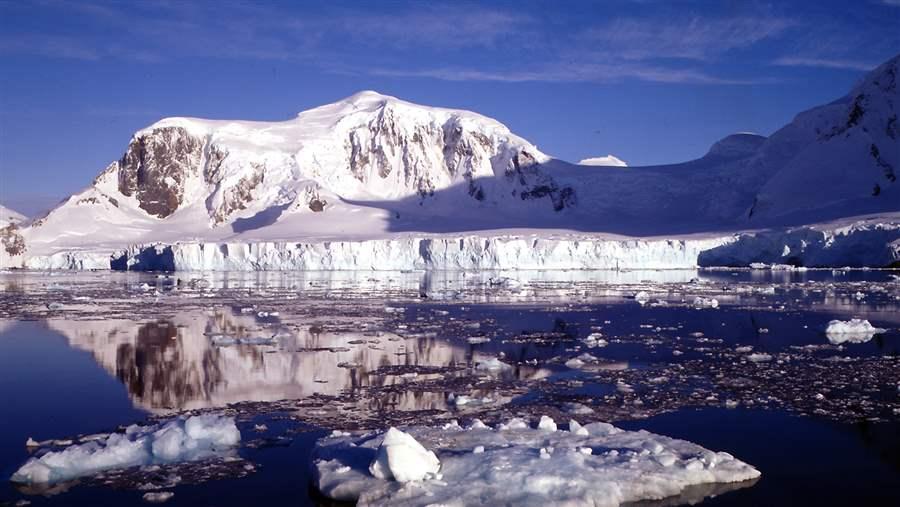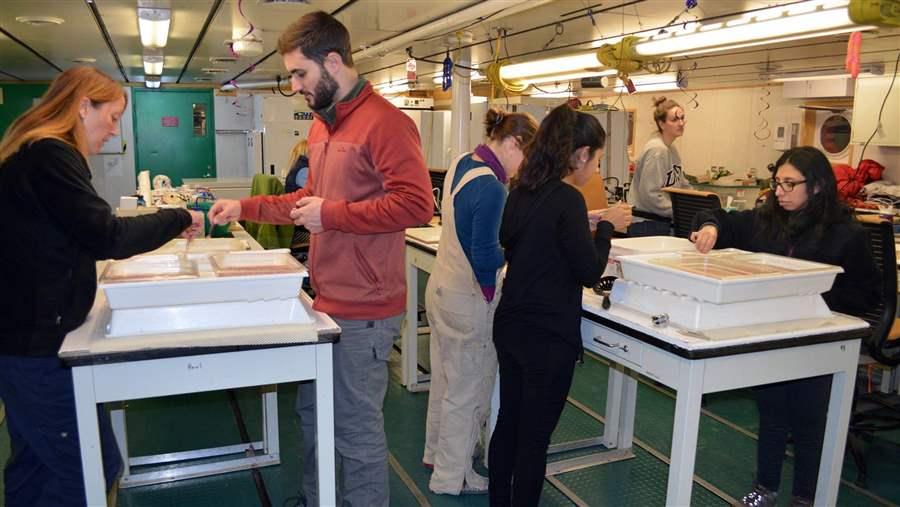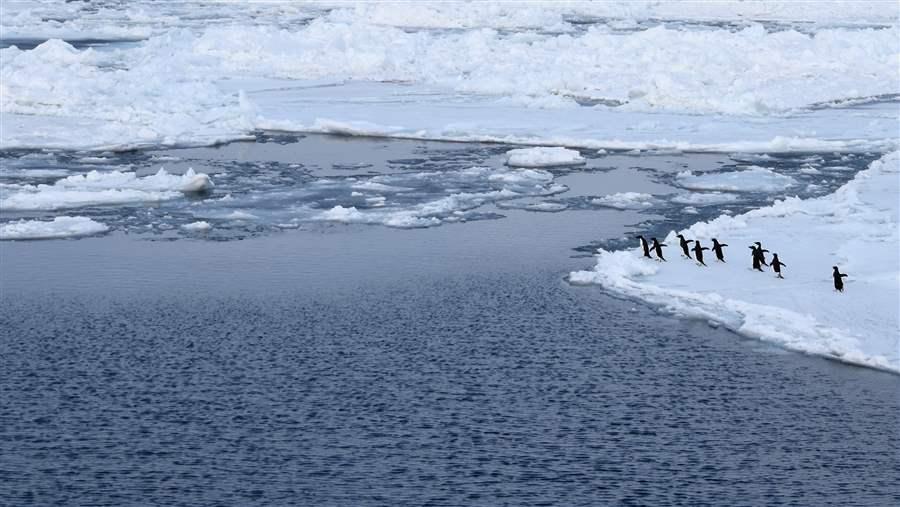After a Winter Trip to Antarctica, I Want to Protect It Even More
Threats to krill, penguins, and other species show the need to safeguard the Southern Ocean

The view from the Gerlache Strait between Anvers Island and the Antarctic Peninsula. The strait is one of the most heavily fished areas of the continent for Antarctic krill.
© Zee Evans/National Science Foundation
The coast of Antarctica is a breathtaking kaleidoscope of ever-shifting light and colors. In the twilight of the austral winter, for a few hours every day, the sea ice turns a fiery orange as shadow puppets trace the cracks across slow-moving waves. Snow-covered peaks turn from dark blue to fluorescent pink during the sun’s fleeting appearances above the horizon. Penguins pop in and out of the water on their way to forage, while crabeater seals haul out on the ice to rest.
My first encounter with sea ice and Antarctica’s jagged coastline came last August, when I joined a group of experts on a U.S. National Science Foundation research vessel for a monthlong voyage to the Antarctic Peninsula. Led by the Antarctic Marine Living Resources program at the U.S. National Oceanic and Atmospheric Administration, our crew gathered data during the austral winter to better understand how populations of krill—tiny shrimplike crustaceans that are the main food source for many species of penguins, seals, and whales—are being altered by factors such as climate change and declining sea ice. Findings from the study showed that climate change will affect Antarctic krill, their predators, and fisheries in the Southern Ocean.

Ryan Dolan of Pew’s global penguin conservation campaign at work during his August 2016 voyage on a research vessel chartered by the U.S. Antarctic Marine Living Resources program. Dolan joined a group of scientists to study krill, a tiny crustacean that is critical to the Southern Ocean food web.
© Angela Klemmendson
Krill also face another threat, which was not a focus of our research: Concentrated industrial fishing is depleting local krill populations, potentially forcing penguins and other species to shift their foraging patterns. Krill are commonly used to make omega-3 supplements and feed for livestock and farmed fish, such as salmon.

Concentrated industrial fishing is depleting local krill populations, potentially forcing penguins and other species to shift their foraging patterns.
© The Pew Charitable Trusts
Visiting Antarctica during its intensely cold, dark, and stormy winter is considered extreme even among the Antarctic scientific community. Most researchers—and all tourists—visit the region during the summer. I left the humid summer in Washington, D.C., to face wind chills of minus 53 degrees Fahrenheit in one of the coldest and windiest places on Earth.
But the environment was captivating and the work invigorating, affording me a firsthand look at a pristine place in need of protection. And just two months after the voyage, the Commission for the Conservation of Antarctic Marine Living Resources (CCAMLR), an international body that manages human activities in the Southern Ocean, took a critical step toward that protection, designating the Ross Sea as the world’s largest marine protected area (MPA). The MPA, which enters into force in December, prohibits commercial fishing in an area more than twice the size of Texas. The Ross Sea MPA didn’t come easily, taking over five years to negotiate among CCAMLR’s 25 member governments. But the designation shows that safeguarding large parts of the Southern Ocean is possible and that even countries with disparate priorities can come together to protect our planet’s ocean legacy.
The Pew Charitable Trusts encourages CCAMLR to build on this win by creating a network of MPAs in the Southern Ocean, home to some of the most pristine marine ecosystems in the world. MPAs provide many benefits, such as creating refuges for threatened species, building resilience to climate change effects—such as sea ice loss—and establishing connectivity among ecosystems that allows marine life to migrate among protected areas for breeding and foraging.
CCAMLR has a blueprint to accomplish this. The commission has mapped the Southern Ocean into nine planning areas, and members are working to create a network of MPAs across these zones. The Ross Sea was the first MPA designated under this framework, and CCAMLR is negotiating proposals for two more protected areas—in the East Antarctic and Weddell Sea. We are hopeful the commission will adopt those at its next annual meeting in October. We expect proposals for other MPAs to follow in the near future, including one off the Western Antarctic Peninsula.
My trip to Antarctica was life-changing and further motivated me to work to protect the region. CCAMLR’s Ross Sea MPA victory shows that, given a base of strong science and the combined voices of concerned citizens, the commission can do what is right by protecting the Southern Ocean and some of the most pristine environments left on Earth. And we’re just getting started.
Ryan Dolan is an officer with The Pew Charitable Trusts' global penguin conservation campaign.


Quel genre de manchot êtes-vous ? Faites le test!
Découvrez votre personnalité de manchot et votre habitat de prédilection dans le vaste océan Austral


Un réseau d’aires marines protégées dans l’océan Austral
Protéger l’une des plus grandes régions sauvages de la planète







